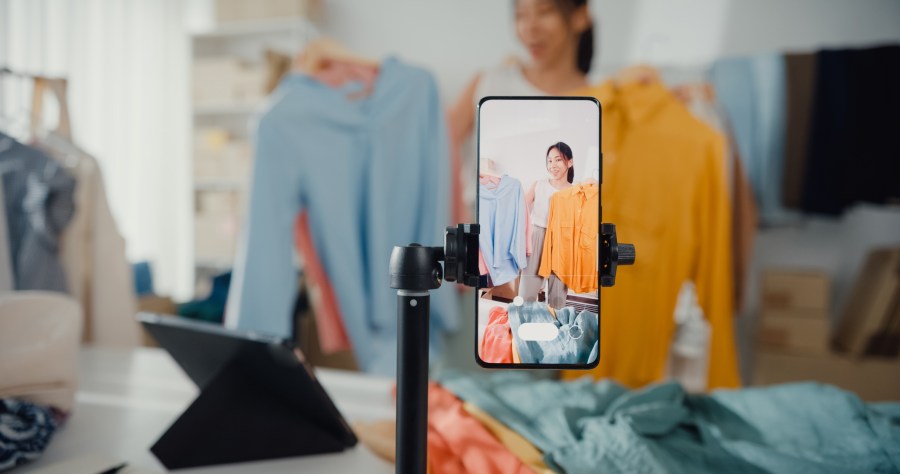Big retail companies are paying influencers to help them with their TikTok presence

At the start of this year, Sal Farzin decided to quit his corporate desk job to become a full-time content creator. He reviews all kinds of products on TikTok, but mostly reviews products from Amazon that he purchases. “Primarily within the home, tech and just overall lifestyle products is really where I focus on,” he said.
He made his debut on TikTok during the first few months of the pandemic. Remember, when we were all stuck inside, scrolling on our phones for products to yassify our homes. Farzin’s product reviews resonated.
“After three days, and only posting three videos, my channel grew from zero to 50,000 followers,” he added.
He joined Amazon’s Influencer Program, which capitalizes on the creative videos of thousands of TikTok users.
“Video is now king,” said Mae Karwowski, CEO of a marketing agency called Obviously. She said Amazon recognized it needs in on TikTok engagement. “Brands haven’t been able to handle that transition and really can’t create an enviable TikTok profile themselves.”
So, brands have influencers do that job for them. Including Walmart.
TikTokker @DevanOnDeck is part of the Walmart Creator program, launched in December. He’s already done a few unboxing videos for the retail giant on TikTok, where he highlights the products he’s bought from the company.
Anyone can apply to the program as well as to Amazon Influencer.
And it used to be that influencers had to be rich, famous or beautiful to succeed as product hawkers. But Amazon and Walmart are changing that standard, said Kelli Burns, a professor at the University of South Florida who researches the creator economy.
“It has democratized the process because there are more avenues for people, and they can build these relationships with these big brands or big retailers,” she said.
However, she warned that there could be a downside to having so many TikTokkers jumping into this space. “With all these influencers flooding the platform and promoting products, we may see content that is not as creative in our feeds,” Burns said.
In the meantime, influencers like Sal Farzin are banking on giant companies like Amazon and Walmart to make a living. Right now, he has 2.8 million followers on TikTok and said he earned six figures from this gig last year.

Related links: Insight from Meghan McCarty Carino
In December, Amazon introduced a TikTok-like feature called Inspire. It’s a portal that lets customers scroll through short-form videos and images of products they can buy from the retail platform. But a column by Leticia Miranda in Bloomberg News pointed out that Amazon has tried something like this before. Its Amazon Spark feature, launched in 2017, tried to capitalize on the social media darling of that day: Instagram. But it never really caught on.
Something that has caught on like wildfire on TikTok? Dupes. As in duplicates of luxury or brand-name products, often in the beauty or clothing categories. The Atlantic recently highlighted this trend, which has spawned a new genre on the platform called deinfluencing in which TikTok creators convince users not to buy expensive, brand-name stuff.
But now, many of the deinfluencers have become so influential — since they’re seen as more authentic than regular influencers — that now brands want to partner with them. It’s all very circular and confusing.
The future of this podcast starts with you.
Every day, the “Marketplace Tech” team demystifies the digital economy with stories that explore more than just Big Tech. We’re committed to covering topics that matter to you and the world around us, diving deep into how technology intersects with climate change, inequity, and disinformation.
As part of a nonprofit newsroom, we’re counting on listeners like you to keep this public service paywall-free and available to all.
Support “Marketplace Tech” in any amount today and become a partner in our mission.












